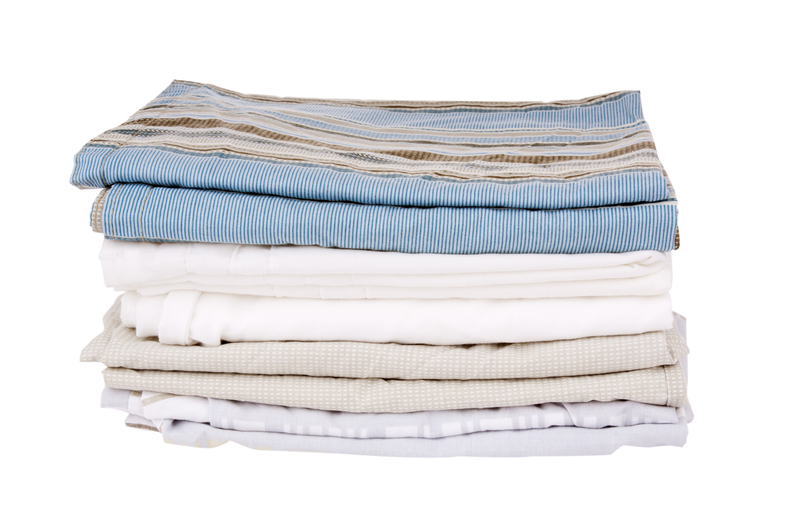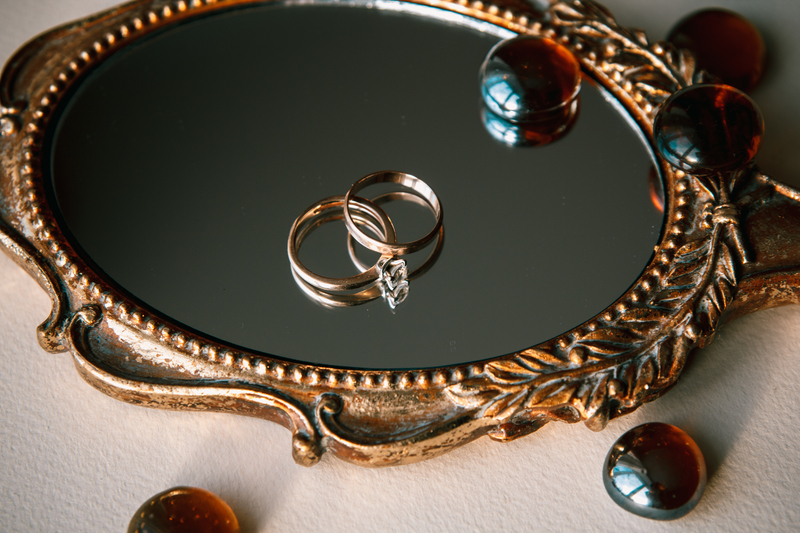Design with a Difference: Upcycling Trash into Statement Pieces
An Innovative Approach to Creativity: Upcycling Trash into Statement Pieces
In our rapidly evolving world, where sustainability is not just a trend but a necessity, the notion of design with a difference has gained remarkable prominence. Upcycling trash into statement pieces is a revolutionary movement that takes what's considered waste and transforms it into bold, beautiful, and practical decor or fashion--putting a stylish spin on sustainability.
What Does Upcycling Really Mean?
Upcycling refers to the creative process of converting discarded materials, otherwise considered as trash, into products of higher quality or value than the original. This approach is different from traditional recycling, which typically breaks down waste into raw materials. Upcycling, instead, leverages the item's existing form, giving it new life and function.
- Eco-friendly approach: Reduces landfill waste by reimagining objects.
- Unique outcomes: Each upcycled piece is often one-of-a-kind.
- Minimal resource use: No need for energy-intensive remanufacturing.
- Storytelling: Each piece carries the narrative of its transformation.

The Rising Trend of Upcycling in Design
Designers, artists, and creative enthusiasts are driving a powerful trend that taps into our collective concern for the environment--transforming trash into conversation-starting statement pieces. From avant-garde sculptures made from old electronics to fashionable jewelry crafted from discarded plastic, upcycling is making waves in the worlds of art, fashion, and interior design.
Why Is Upcycling Gaining Momentum?
The popularity of upcycled statement pieces is a response to multiple factors:
- Environmentally conscious consumers: More people are seeking sustainable choices in their purchase behavior.
- Customization: Upcycling enables personalization, delivering pieces that reflect individuality.
- Creativity unleashed: Designers love the challenge and reward of improvizing with unconventional materials.
- Economic benefits: Upcycling can be a cost-effective business model and hobby.
From Trash to Treasure: Upcycling Techniques and Materials
Commonly Upcycled Materials
- Plastics: Bottles, caps, broken toys.
- Metals: Old tools, cans, wiring.
- Glass: Jars, bottles, shattered glass.
- Fabrics: Torn clothing, curtains, upholstery.
- Wood: Pallets, old furniture, branches.
- Electronics: Circuit boards, wires, CDs.
- Paper and cardboard: Magazines, boxes, books.
Popular Upcycling Techniques
- Assemblage art: Combining disparate objects into a unified, creative new whole.
- Repurposing: Adapting an item for a completely different function.
- Embellishment: Decorating items with paint, fabric, or other materials.
- Deconstruction: Breaking down items into their components for reuse in new projects.
- Mosaics: Using broken tiles or glass to create colorful patterns.
How Upcycling Makes a Statement
Upcycled statement pieces go far beyond mere decoration. They can express an eco-friendly philosophy, serve as symbols for change, or act as conversation starters in any environment. Upcycling trash into unique designs elevates mundane materials and throws a spotlight on creativity and conscious consumption.
Home Decor with a Conscience
Imagine a coffee table assembled from old shipping pallets or a chandelier fashioned from upcycled glass bottles. These aren't just functional pieces--they're expressions of values. Design with a difference for your home infuses spaces with originality, environmental stewardship, and engaging visual narratives.
Fashion That Speaks Volumes
In the fashion world, upcycled designs mean repurposing denim into trendy bags, or converting bicycle inner tubes into rugged, stylish belts. Fashion brands and independent designers alike are embracing upcycling trash into wearable statement pieces that counter fast fashion's environmental toll while offering shoppers truly individual style.
The Benefits of Upcycling
- Reduces waste: Directly diverts trash from landfills and oceans.
- Promotes creativity: Forces designers to think innovatively about materials.
- Supports sustainability: Lowers demand for virgin raw materials.
- Economic savings: Often less expensive than sourcing new materials.
- Raises awareness: Statement pieces made from "junk" prompt conversations about the environment.
Spotlight: Creative Upcycling Ideas That Make a Difference
1. Upcycled Furniture: Turning Pallets into Centerpieces
Old wooden pallets, once discarded after shipping, have found a new lease of life in innovative furniture design. From rustic coffee tables to garden loungers, pallets are sturdy and remarkably versatile. Designers use sanding, painting, and stacking techniques to create bespoke statement furniture pieces that blend function, form, and eco-consciousness.
2. Lighting Fixtures from Upcycled Trash
Discarded glass bottles, tin cans or even broken glass can be transformed into dazzling pendant lights or modern chandeliers. These lighting solutions not only brighten up a space but also tell a story of transformation and sustainability, proving that design with a difference doesn't compromise on beauty or utility.
3. Upcycled Fashion and Accessories
Old vinyl records turned into handbags, bicycle chain links refashioned into bracelets, and weathered leather jackets turned into wallets--the possibilities are endless. By upcycling trash into fashion, creatives are challenging notions of luxury, demonstrating that exclusivity can also be sustainable.
How to Begin Your Own Upcycling Journey
Getting Inspired
You don't have to be a professional designer to participate in the global movement of upcycling trash into statement pieces. Start at home by reimagining items before throwing them away. Online communities, social media platforms, and DIY websites offer a plethora of inspiration--connecting like-minded individuals around the world.
Simple Upcycling Projects for Beginners
- Transform old jars into decorative vases or candle holders.
- Turn worn-out t-shirts into reusable shopping bags.
- Convert broken CDs into shimmering mosaic coasters.
- Refashion wine corks into unique bulletin boards or keychains.
Businesses and Brands Leading the Upcycling Revolution
Many forward-thinking brands have placed upcycling at the core of their business model. These brands set an example and inspire others by proving that waste can be beautiful--and marketable.
- TerraCycle: Known for its commitment to recycling hard-to-recycle materials, TerraCycle also partners with brands to create upcycled products, from backpacks to planters.
- Rothy's: This footwear brand manufactures chic shoes and accessories from recycled plastic water bottles.
- Freitag: Based in Switzerland, Freitag creates distinctive bags from truck tarps, seatbelts, and bicycle inner tubes, each with a story and unique design.
- BottleCloth: Uses discarded plastic bottles to create vibrant tablecloths and runners.
- Parley for the Oceans: Collaborates with major fashion brands to transform ocean plastic waste into high-performance apparel.
Challenges and Considerations in Upcycling Design
Like any innovative movement, designing with upcycled materials is not without its hurdles. Some of the challenges include:
- Material limitations: Not all waste can be easily or safely repurposed.
- Quality control: Ensuring that upcycled products meet durability and safety standards.
- Design limitations: The available form and nature of discarded materials can constrain creativity.
- Consumer perceptions: Overcoming the stigma that "trash" cannot be transformed into valuable goods.
However, these challenges often spur greater creativity, pushing designers to innovate in both form and function. As demand for sustainable goods grows, so too does acceptance and appreciation for expertly crafted upcycled products.

Environmental Impact: The True Value of Upcycled Statement Pieces
When you choose upcycled statement pieces for your home, wardrobe, or office, you're making more than just an aesthetic choice. You're:
- Reducing carbon footprint: Upcycled goods require less energy than products created from virgin materials.
- Saving water: For example, upcycled fashion greatly diminishes the intensive water use of cotton production.
- Protecting biodiversity: Less landfill and ocean trash helps to safeguard habitats for wildlife.
- Supporting ethical labor: Many upcycling initiatives are grassroots and community-focused, providing fair employment opportunities.
Conclusion: The Lasting Appeal of Upcycling Trash into Statement Pieces
Design with a difference is more than a design philosophy--it's a call to action. It asks us to see potential in the discarded, to value resourcefulness, and to express ourselves boldly and sustainably. By upcycling trash into unique, striking statement pieces, we aren't just lowering environmental impact; we're infusing art, fashion, and our lives with stories of hope, ingenuity, and transformation.
As upcycling continues to gather momentum, more people and brands are realizing that what we once saw as waste is actually a treasure trove for modern design. So, the next time you find yourself about to toss something away, ask: Could this be upcycled into a statement piece, and make a difference in the process?